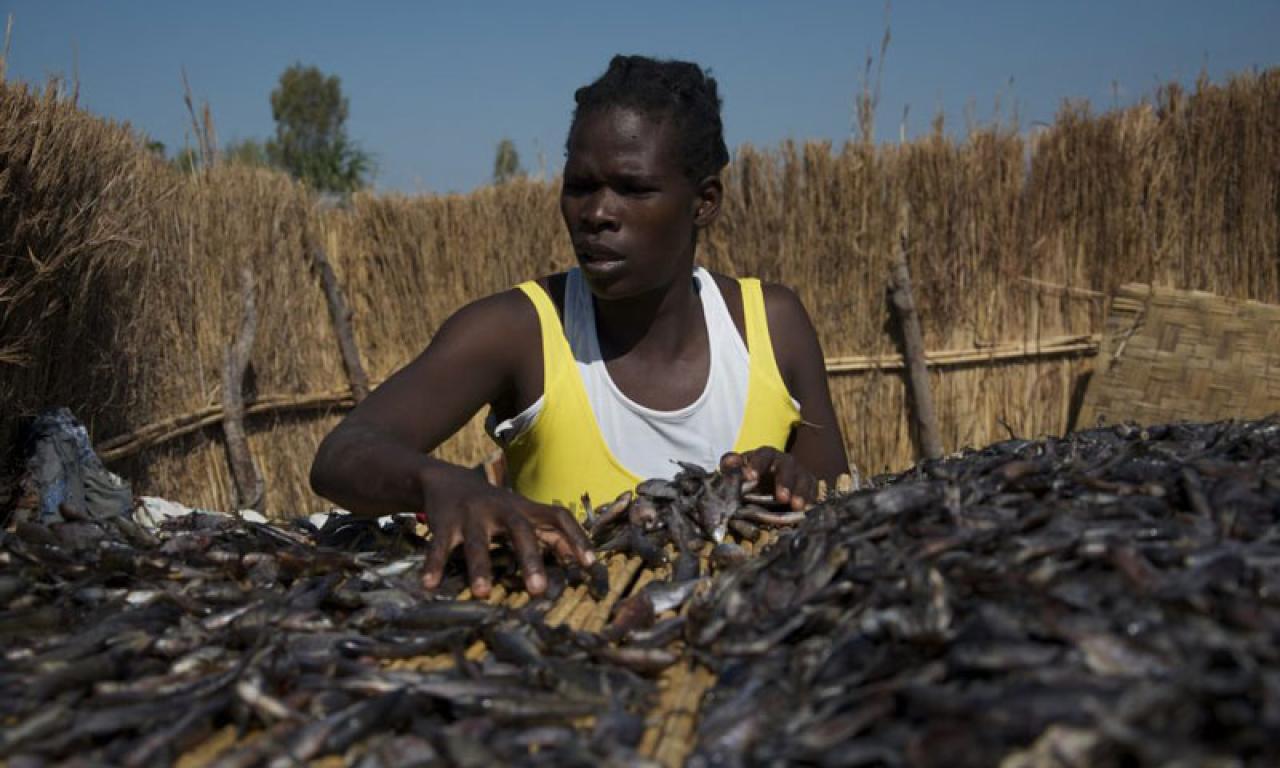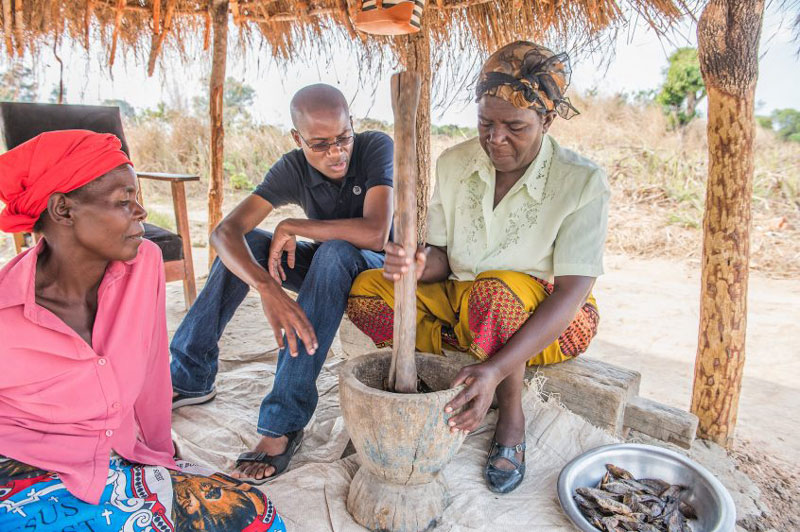
Inland fisheries are critical to supplying children with the nutritious, diverse diets required for cognitive development in rural sub-Saharan households, a new WorldFish research publication revealed.
Inland fisheries are critical to supplying children with the nutritious, diverse diets required for cognitive development in rural sub-Saharan households, a new WorldFish research publication revealed.
The study determined fish was the primary animal-source food in the diets of infants and young children in Malawi and Zambia, and proximity to inland fisheries increased aquatic food consumption. The research showed that children rarely consumed other animal flesh foods like beef or chicken, underscoring fish and aquatic foods’ contributions to diet diversity and diet quality.
A heavy reliance on cereal crops as staple foods, coupled with a lack of access to healthcare, leads to diminished health outcomes for children in rural sub-Saharan Africa, where malnutrition rates continue to rise. Inadequate diet diversity and limited animal-sourced food consumption ultimately result in stunted growth and poor educational performance later in life.
Fish and aquatic food production can overcome the obstacles to good nutrition in rural households. Fish provide vital micronutrients during the first 1,000 days of life—from conception to the age of two—that ensure optimum cognitive and physical development. Aquatic food-based strategies can thus be used to improve health outcomes of infants and young children, who lack access to nutrient-rich foods available at urban markets, suggested researchers from WorldFish, the Natural Resources Institute, The University of Zambia (UNZA), and the FAO.
In a move to tackle malnutrition and increase the accessibility of nutrient-rich foods, researchers sought to understand the drivers of fish consumption in infants and young children in the region. The findings revealed a clear positive relationship between diet quality, fish consumption, and proximity to inland fisheries.
Households within 5km of inland fisheries were the most likely to report fish consumption in young children and higher diet quality. Conversely, fish consumption declined as the distance from fisheries increased and diet quality suffered. This confirms previous findings that food supply chains in rural sub-Saharan Africa are short, with strong dependence on proximate food sources.
Pockets of severe animal-sourced food deprivation were identified across both Malawi and Zambia. Children with the lowest diet quality and diet diversity lived the furthest from both inland fisheries and urban markets. Food systems may target these nutritionally vulnerable groups with the expansion of supply chains that bridge the gap between inland fisheries and isolated communities. The research calls on governments and development partners to focus on improving access to fish for rural children during their critical window of growth, ensuring optimal lifelong health.
The research was led by the CGIAR Research Program on Fish Agri-Food Systems (FISH) as part of Illuminating Hidden Harvests (IHH), highlighting the contributions, impacts, and drivers of change in small-scale fisheries globally. A conceptual framework on food systems and food security was used to understand the relationship between availability, accessibility, and utilization of nutritious foods – informing the global approach to mitigating barriers between production and consumption.
Small fish increase access to nutritious foods

Despite fish accounting for 19% of Africa’s animal protein intake, the consumption rate of fish and aquatic foods in Africa is below the global average. There is room to increase consumption, particularly in landlocked nations, to meet growing nutritional demands. Lakes, rivers, and other inland water bodies offer an abundance of localized natural resources. Small fish that inhabit inland water bodies are the most affordable and sustainable animal-sourced foods in these low- and middle-income countries. Such species can reproduce their biomass up to five times within a year, significantly faster than larger species with slow reproductive rates.
The research suggests small fish species are an underutilized resource with the potential to increase diet quality and diversity in rural areas. They offer higher micronutrient yields and require few environment inputs. Dried fish can be ground into powder, which resolves food spoilage issues that arise from a lack of cold storage. The powder can be easily mixed into children’s meals to increase their nutrient intake. Dried small fish powder is rich in vitamins, minerals, and protein; it also increases the uptake of critical nutrients, including iron, zinc, calcium, and Vitamin A.
While the importance of inland fisheries is often overlooked in food systems discourse, these informal channels remain a key source of nutritious foods for children in areas with limited access to urban markets. Improved research and investment in small-scale fisheries can further harness the potential of these nutrient-rich food sources with low environmental impact.
